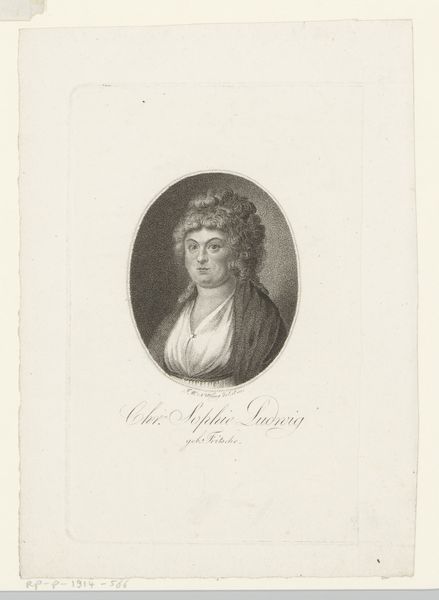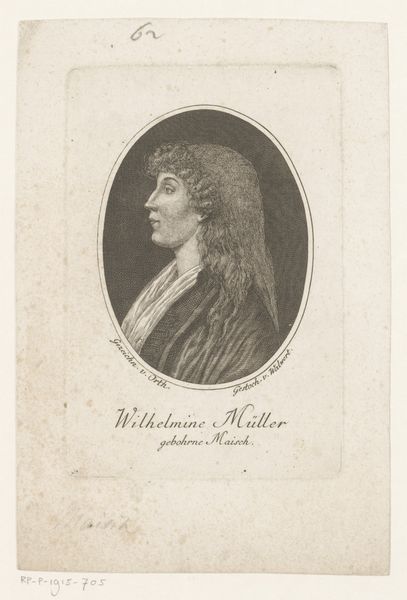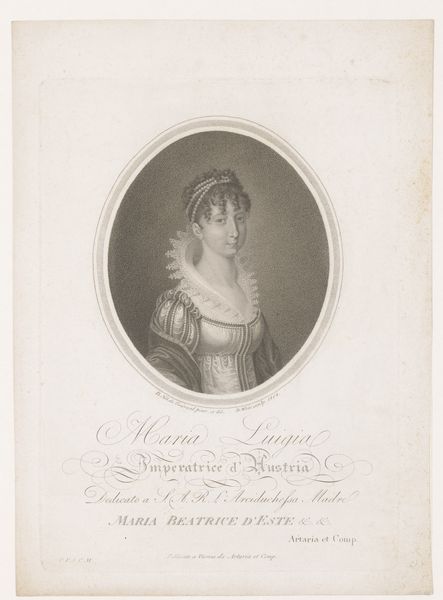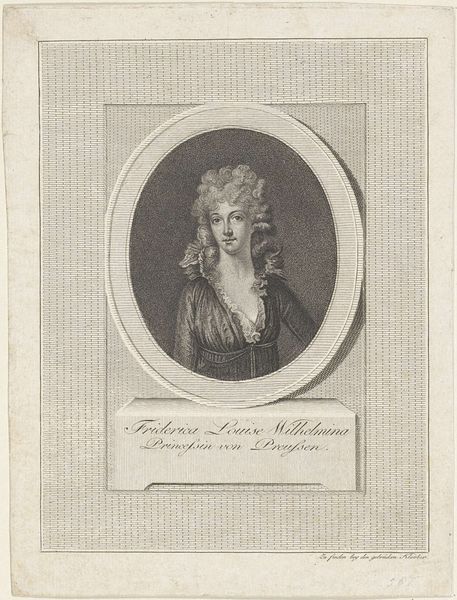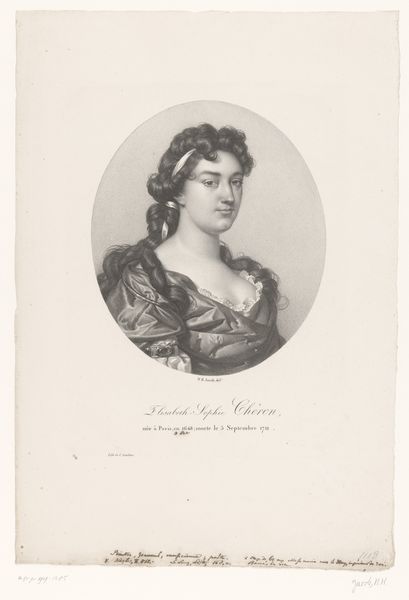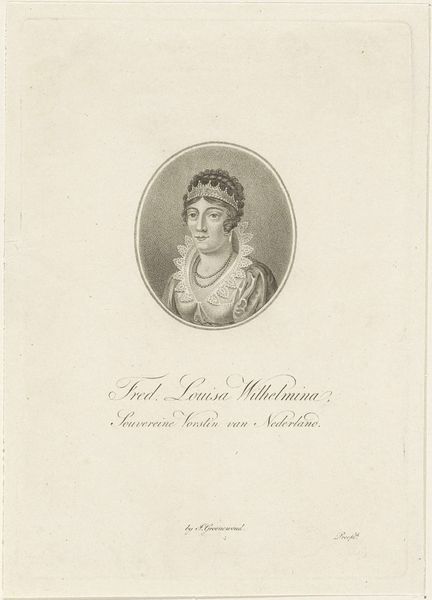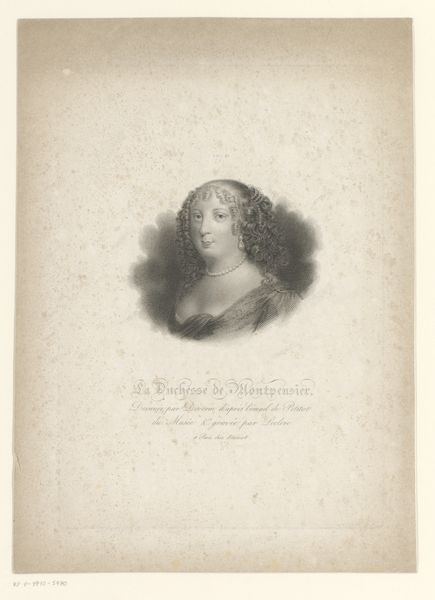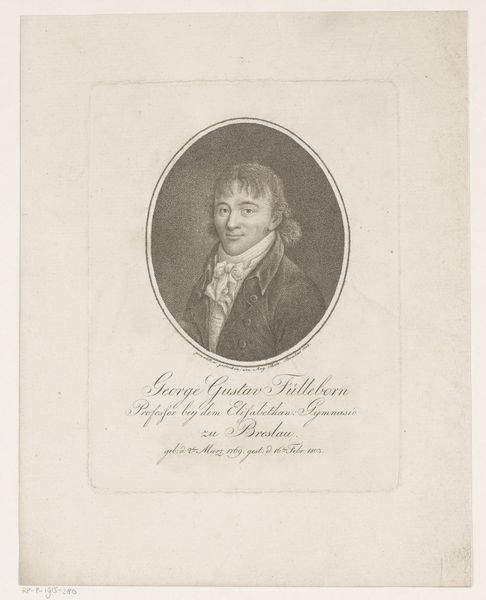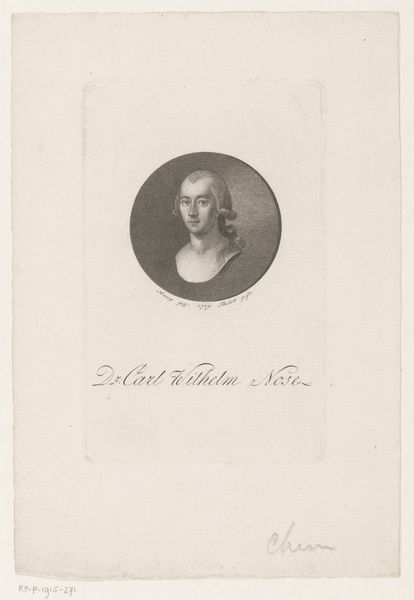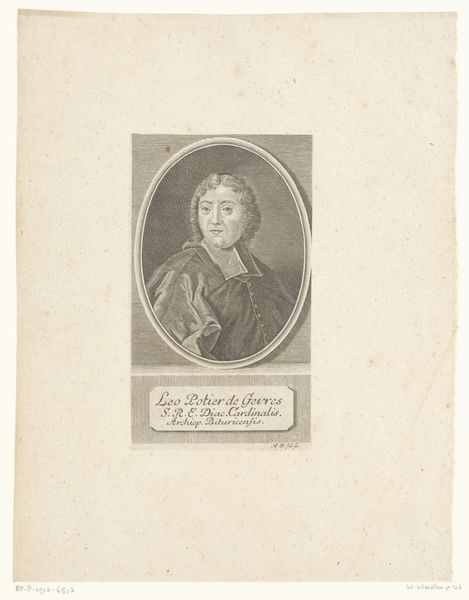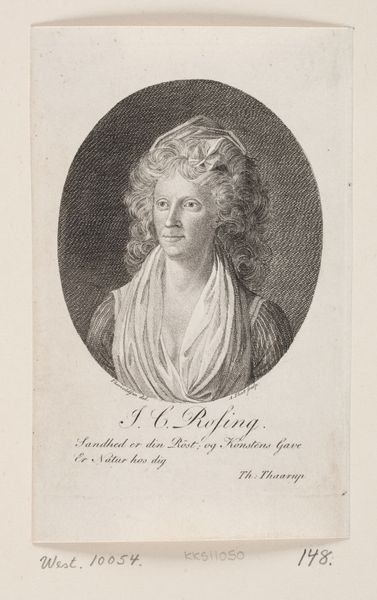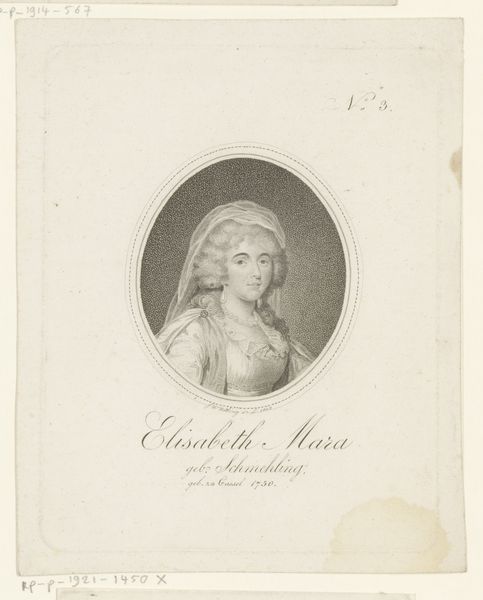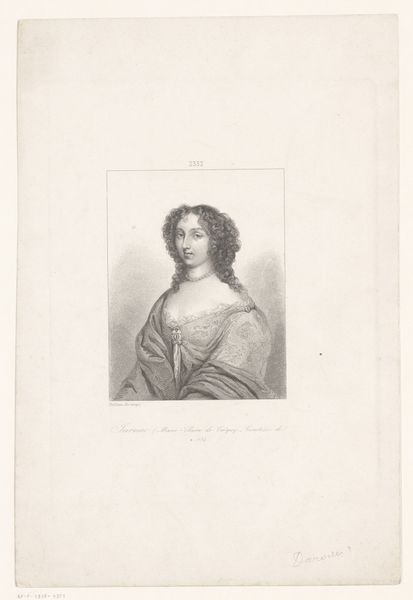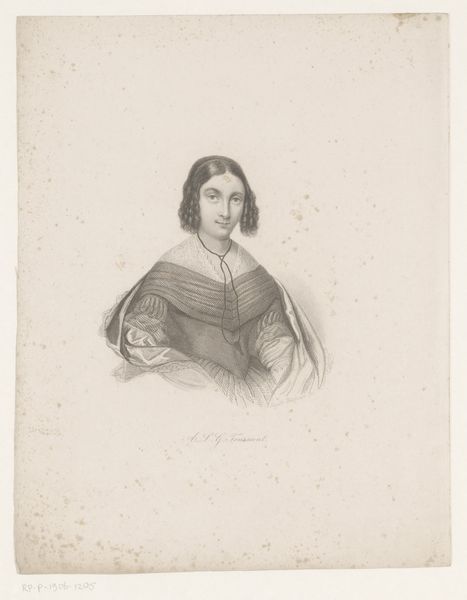
drawing, engraving
#
portrait
#
drawing
#
neoclacissism
#
line
#
academic-art
#
engraving
Dimensions: height 130 mm, width 90 mm
Copyright: Rijks Museum: Open Domain
Curator: Up next, we have an engraving from Franz Xaver Gebhard: a portrait of Wilhelmine Augusta Müller, made sometime between 1775 and 1807. It's a delicate piece. Editor: "Delicate" is the word. She seems to float right off the paper. There's an airiness to her, a fragility almost, emphasized by the wispy tendrils of hair. Curator: I agree. Gebhard was working in the Neoclassical style, which favored line and form over color. Notice the precision in the engraving, particularly the subtle gradations creating volume in her face. It adheres to academic art traditions but, unlike other work in this vein, it's absent of stark and dramatic effect, and feels so personal. Editor: The oval framing focuses us, isolates her from any external context. And the eyes...they really draw you in, don’t they? A gaze both knowing and a little melancholy, like she’s seen things but chooses not to reveal all. This is typical of formal portraiture. Curator: Right. Though the lines of her garment are simple, classic, yet somehow the rendering remains natural, like it would hang and drape just so. Her dress suggests perhaps the sitter enjoyed some amount of wealth but was very modern in her taste. I feel as though I am getting a true read on her interior life, some private glimpse from all these centuries later. Editor: It's amazing how much personality an artist could imbue into a work, using only line and tone. And it also speaks to the power of portraiture itself, the attempt to capture a likeness but also an essence, the "who" of a person. The choice of engraving emphasizes the ephemeral nature of existence itself, how memories fade and are rewritten. It almost has the quality of a faded memory, doesn't it? Curator: Very true. It's as much about what's present as what feels lost. The artwork is a very nice moment captured within an in-between period of printmaking history that provides for a lot of consideration. Editor: I like how our experience of seeing it can open to the viewer such depths. Well, that certainly gives us something to contemplate, doesn't it?
Comments
No comments
Be the first to comment and join the conversation on the ultimate creative platform.
